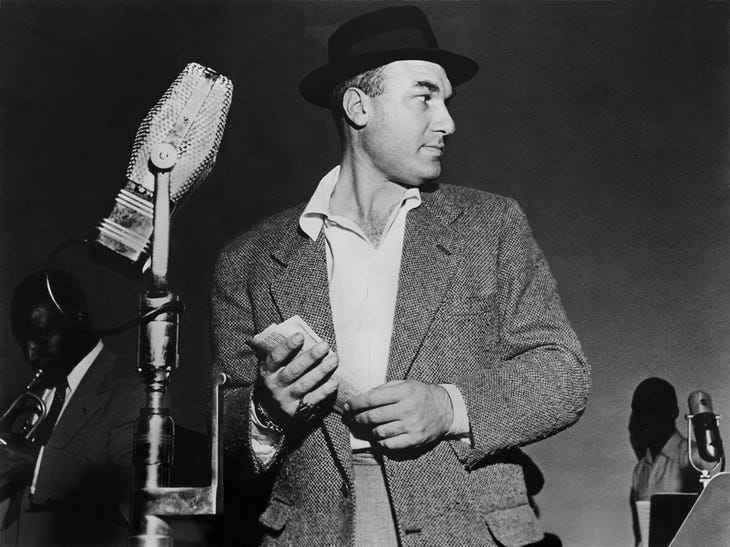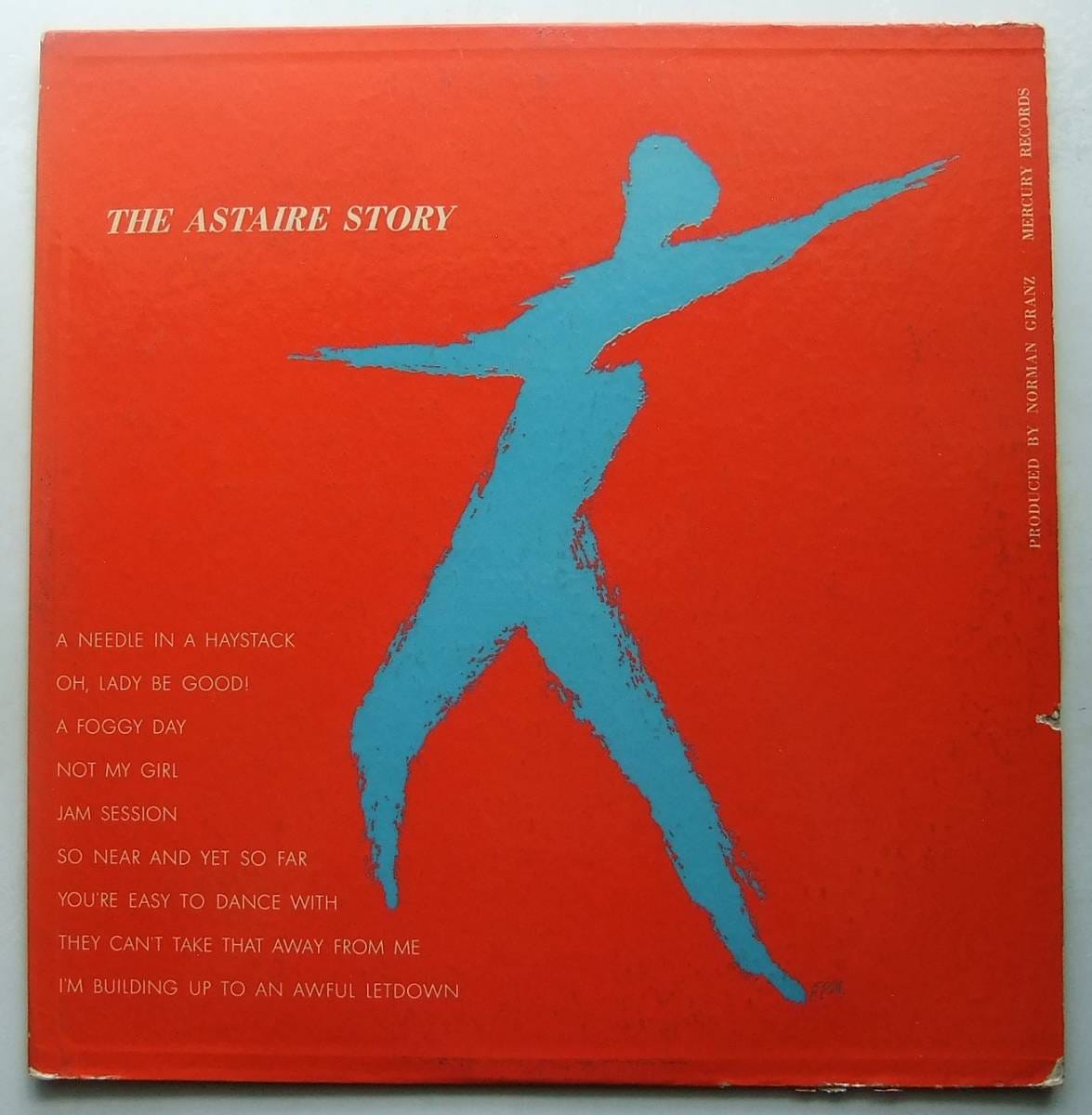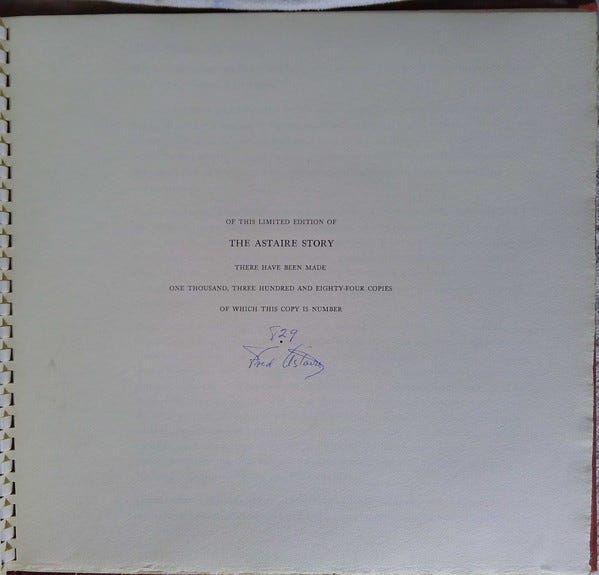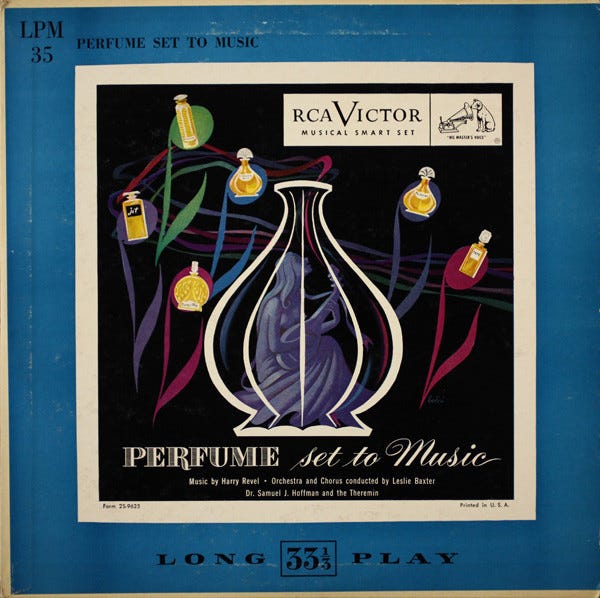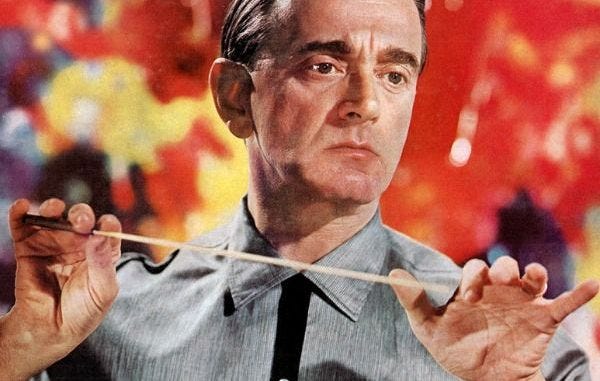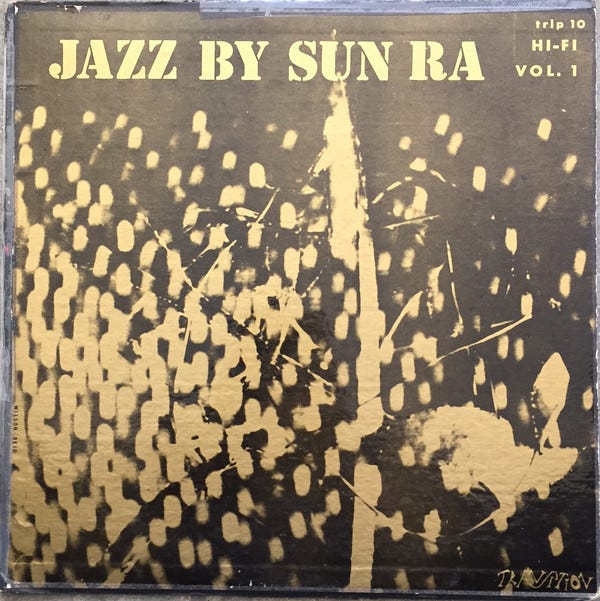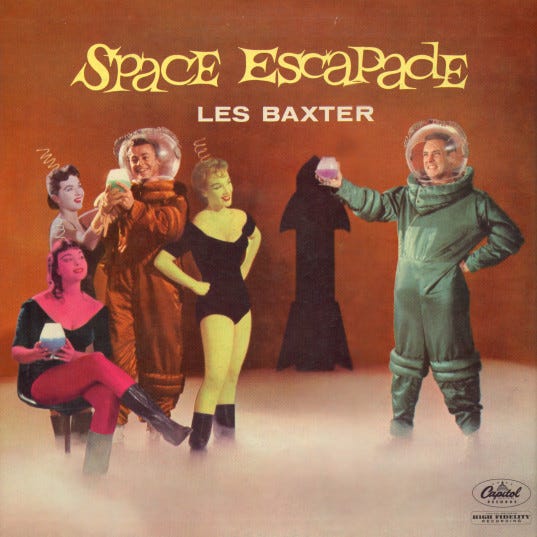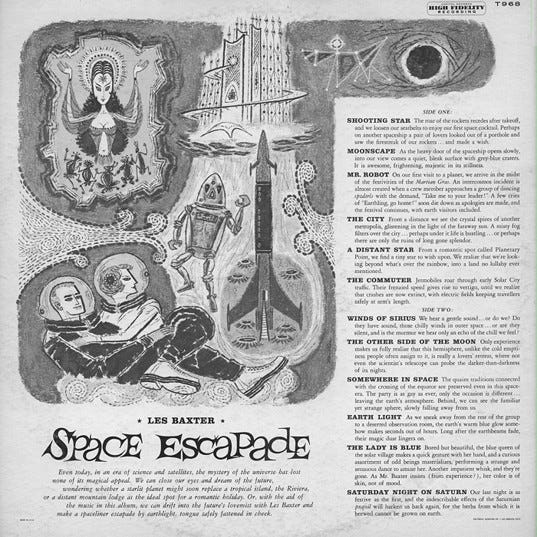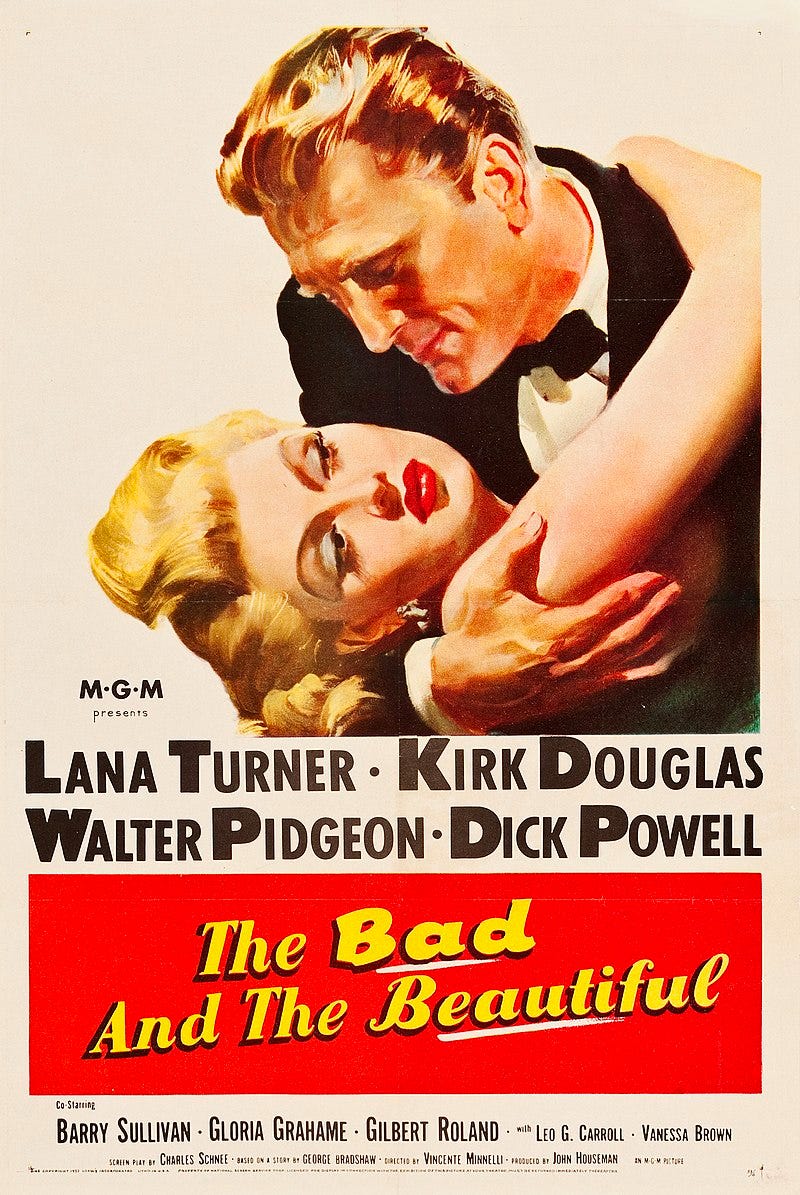Fred Astaire to Sun Ra??
Fred Astaire brought me to jazz - although at the time, I did not know it....
I’ve been writing about my Jazz Journey since October 18th of last year. Lately, it struck me - how did I get from Fred Astaire to Sun Ra? How did I find my way from one to the other?
How did Top Hat or Slap That Bass get me to John Gilmore soaring on Sketch:
As I look back now, it was the musical number Slap That Bass from Fred Astaire and Ginger Rogers’ 1937 RKO film Shall We Dance that opened me up to a musical sound that brought me to jazz - although at the time, I did not know it.
I heard Slap That Bass on a Friday during the TV “Weekly Matinee” show. It had been airing: The Fred Astaire and Ginger Rogers Week. Five days of their movies, starting on Monday with Flying Down To Rio and ending on Friday with Shall We Dance. Earlier “Weekly Matinee” shows had featured, for example, John Wayne Week, The Thin Man Week, and Charlie Chan Week, but not many musicals.
I was probably in 6th grade at the time. This was a time in my life when there were no after-school sports or activities to distract me. A time when I could run home from school and sit down in front of the TV and watch old movies. We didn’t have a color TV at that time, but it didn’t really matter, most of the “Weekly Matinee” movies were in black and white anyway. I remember liking John Wayne Week. I particularly remember liking The Searchers, for example. But when Flying Down to Rio came on the next Monday at 3:00 pm, it was like, “Wait, what is this?”
I can’t explain why I liked it so much. I just did.
Fred Astaire inspired me to take up tap dancing. I bought a pair of black patent leather Capezio tap shoes and carried them in the box to and from dance lessons. Tap dancing brought me closer to my idol. It was through Fred Astaire that I learned the music of great American composers like George and Ira Gershwin, Irving Berlin, Cole Porter, and Bert Kalmar and Harry Ruby.
I later found I shared a love for Fred Astaire with the great jazz record producer Norman Granz.
In 1953, Granz produced The Astaire Story, a four-78 RPM record set of Fred Astaire, with jazz backup, singing great American songs that he had introduced on stage and in his films between 1926 and 1944.
This record set was a labor of love. Granz selected the best jazz musicians he could find to work on this project with Astaire: Oscar Peterson on piano, Ray Brown on Bass, Barney Kessel on guitar, Flip Phillips on tenor saxophone, Charlie Shavers on trumpet, and Alvin Stoller on drums. The project was wonderfully illustrated by David Stone Martin and photographed by Gjon Mili. Here’s a classic from those sessions:
Ted Hershorn writes in his biography of Norman Granz, The Man Who Used Jazz For Justice:
Astaire was so impressed with Granz that shortly after the project was complete he offered to enlist as a partner in Granz’s record company. Granz demurred. “I’m flattered, Fred,” he said. “I think it is very generous of you, and I am totally sure you would lose your investment. My company is run on a strange personal basis, as I have no intention of making money, but rather making unique and special recordings. My concerts support the record company, the company is not successfully self-supporting.”
OK, so Fred Astaire was a big jazz fan, but I’m still asking myself, how did I get from Fred Astaire to Sun Ra?
I think the postwar jazz band scene did not really interest Sun Ra. As Sun Ra’s biographer John Szwed writes in Space is the Place, “Most (bands) were either recycling past successes or showing singers to the front; or else attempting to paste the innovations of Charlie Parker and Dizzy Gillespie onto older formulas.”
On the other hand, Sun Ra was listening to the music of Hollywood, in particular the music and arrangements of Les Baxter - now this is where I start to see the connection between Fred Astaire to Sun RA.
Originally issued in 1948 in a three-78 RPM record set, it’s more likely that Sun Ra heard the album Perfume Set To Music on the 1951 re-issue.
From the album liner notes, “The suite of musical sketches on this record is the result of a new and fascinating field of exploration by British-born composer, Harry Revel. Inspired by the heady scents of the famous French Corday perfumes.”
As I listen to all the tracks, I find the songs interesting, but in no way perfume-like. I’m not sure what the perfume Toujours Moi should sound like, but the songs sound more like basic soundtrack music, except for one major difference: the strange sounds of the theremin.
Here’s a demonstration of the inventor, Leon Theremin, playing his strange innovation:
While the theremin was not widely used in popular or classical music performances, it found great success in many motion pictures, notably in Alfred Hitchcock’s 1945 Spellbound.
The score was written by legendary Miklós Rózsa, an Academy Award-winning composer, who pioneered the use of the theremin in Hollywood scores.
I think Sun Ra was taken by this mysterious instrument. The evidence, for me, is in his debut album Jazz By Sun Ra recorded in 1956 for the independent Transition label.
Only one of the 10 tracks on this album is not written by Sun Ra (One other song is credited to his drummer, Richard Evans). Possession was written by Harry Revel for Les Baxter’s Perfume Set To Music. It is significant that he would include this song on his very first album. Here’s it is:
Sun Ra’s version stays very close to the Revel original from Perfume Set To Music - if you care to, you can listen to it here. You can clearly hear the theremin at the 45-second mark. Although Jazz by Sun Ra is a pretty straightforward post-Bop album, songs like Sun Song, with the Hammond B3 organ, and New Horizons begin to incorporate some of the futuristic and exotic sounds used by Baxter. During the late 1940s, and throughout the 1950s, Les Baxter’s albums were widely popular in America. I am sure that Sun Ra looked at the success of Baxter’s music and tried to find a similar path for his music. However, the music business of that time was a very tight group and not very welcoming to outsiders.
Today, when I compare Baxter’s 1958 Space Escapade with Sun Ra’s 1958 Jazz in Silhouette, I find Sun Ra’s music much more compelling - it has aged better.
Sun Ra clearly was interested in both the musical and marketing ideas of Les Baxter. For example, take a look at the cover of Baxter’s 1958 album Space Escapade.
Also, take a look at the back cover and the names of the tunes: Moonscape, A Distant Star, The Other Side of the Moon, Earth Light - this has Sun Ra written all over it.
In the way that nothing in Perfume Set To Music sounds perfume-like, nothing in Space Escapade sounds anything space-like to me, until you get to the last song, Saturday Night On Saturn. Now we’re talking. This song is such an outsider on the album. As I listen to it, I hear Sun Ra in there. In particular, I hear Sun Ra’s Exotic Two from his 1961 recording Bad and Beautiful:
I find it interesting that he used Vincente Minnelli’s 1952 film The Bad and the Beautiful for the title of his second album recorded in New York after leaving Chicago.
Right out the gate on the first track, Sun Ra features not one of his compositions, but rather the Andre Previn and David Raskin song Bad and the Beautiful. I think that it is no accident that Sun Ra makes this choice. In his music and his live performances, he always had an eye out for theatrics.
The Maestro recently helped me understand how we find our way in the deep and wide world of music. He wrote, “It’s our mindset at the time, which drives us to seek a sound or allow that sound to seek us.” At the end of the day, maybe it’s as easy as that - Fred Astaire and Sun Ra both just found me.
Here’s one more for the road from Sun Ra’s 1974 release Sub Underground. As Sun Ra plays Love Is For Always, I picture him dreaming of Kirk Douglas and Lana Turner, or maybe, more likely, he’s thinking of the love shared between Sidney Poitier and Elizabeth Hartman in the wonderful movie A Patch of Blue….
Next week, on that Big River called Jazz, we will venture into the backwaters of the music of Albert Ayler….
If you like what you’ve been reading and hearing so far on our journey and would like to share this with someone you think might be interested in learning more about our great American art form: Jazz, just hit the “Share” button at the bottom of the page. Also, if you feel so inclined, become a subscriber to my journey by hitting the “Subscribe” button here:
Also, find my playlist on Spotify: From Fred Astaire to Sun Ra.
Feel free to contact me at any time to talk shop. I welcome and encourage that….
Until then, keep on walking….





